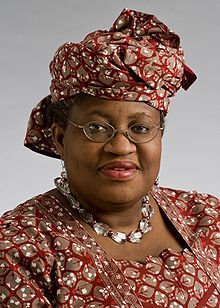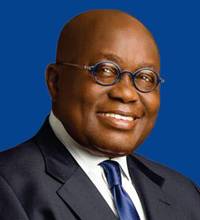Where the Doha Development Round stands, and what is holding it?
By Eric Acha
 This post is a recap of a mail I sent to a friend a few days ago, on answering his question on what are the sticking points to the Doha Development round. However, I have covered the issue more extensively than in my previous response.
This post is a recap of a mail I sent to a friend a few days ago, on answering his question on what are the sticking points to the Doha Development round. However, I have covered the issue more extensively than in my previous response.
As the title of the blog delineates, I have decided to look at where things are at the moment and where the round could be heading to. More importantly is my fair criticism to what Professor Robert E. Baldwin recently put forward as an ultimate solution to the current sticky issue on the additional agricultural safeguard measures holding the DR negotiations. It takes much courage to dispute the views of such a senior scholar, but being an economist, he will take no offence for he knows the discipline is what it is, thanks to the fact that your thoughts are open for criticism as long as a valid one can be found.
For those not familiar with the negotiations, since the first phase in Quarter, each round starting from Doha through Cacün, Paris, Geneva, Hongkong, Geneva, Potsdam, Geneva have had its sticky point that led to a deadlock or a suspension of the session.
However, the early phase of DR negotiations was marred with disagreements on the scale of agricultural subsidies elimination and the liberalisation of the manufacturing sector in the developing countries.
The sticking point here was a demand by the developing countries that the EU and the US in particular, should reform their EU Common Agricultural Policy (GAP) and the US government Agro-Subsidies respectively, in order to fully scrap off the agricultural subsidies they were providing their farmers.
On the other hand, the US was demanding more access (liberalisation) of the manufacturing markets in these developing countries, an issue which was of big concern to the emerging markets especially India, Mexico, Brazil and China.
On a face value, the demands from the both sides might sound quite simple, however, the duration and difficulties on reaching an agreement speaks for itself and makes clear how complicated the whole negotiations are. It has kept the smartest economists and trade experts busy for about a decade today and models have been build to explain the gains and loses that will be involved when a complete agreement is finally reached under the current Doha Round agenda.
Some economists have question if the anticipated gains from DR (in welfare terms) are worth all these negotiations and resource squandering. This thus, has led to the claim that the mercantilist approach of most negotiators involved should shoulder part of the blame.
Going back to the issue, when a deal and compromise was finally brokered on how the US and EU should eliminate their subsidies, many thought the DR would be finalised without much technical difficulties, given that proposals were also made on how the developing countries would liberalise their markets without putting their home industries at risk.
Under the WTO work program, the Doha Ministerial Declaration commits WTO members to providing special and differential treatment with regards to agricultural products for developing countries. This obligation does however, fall short of detailing a special agricultural safeguard measure for these countries.
It was based on this lapse that the developing countries, under the auspices of India requested at the start of the negotiations in 2001 that additional agricultural Safeguard measures be introduced to protect the farmers in these countries in the event of a surge in imports from the developing countries or a decline in world prices that could put the livelihood of their home farmers at risk.
As opposed to the standard safeguard provisions of the GATT/WTO (that require proof of injury or threat of injury before tariffs can be imposed), the requested agricultural safeguard measures will allow the developing countries to raise tariffs in case of such a threat (without due procedure)
The measures were introduced and this seem to have been the stumbling block that led India and US into a confrontation at the last meeting in July 2008.
This may be, explains why India and the US are thought by many to have been the reason behind the last deadlock.
There was no major objection to the overall idea of increasing tariffs, and hence at the Hong Kong ministerial conference in December 2005 WTO members formally agreed that such a special safeguard mechanism covering both quantity and price triggers should be part of the final deal. But the technical difficulties that led to a deadlock was when, by how much and for how long should such special tariffs be in place.
What would be the volume of product inflow that will justify a tariff increase?
So as you can see, what is holding the DR is merely a technical issue, but that seem more complicated than many including the negotiators are taking it to be. It could require just some simple arithmetic but the economic implications and interpretations has magnified the issue and turn to pose more stumbling blocks as it seem to be the case now, and truly, in trade agreements (as Professor Baldwin put it) the devil is in the detail, and yet the problem with his proposal is sort of another devil in the details.
As I pointed out in the last post the stalemate is centred on three issues which are :
- The amount imports must increase before additional protection would be permitted;
- The amount tariffs could be increased; and
- How long they could be maintained.
The current rejected proposal by the WTO Director General Pascal Lamy, which also answered the question on whether the tariff increases could exceed pre-Doha Round rates. He proposed that developing countries be allowed to raise tariffs by up to 15% if the increase in imports of an agricultural product over a three-year moving average exceeded 40%. He also proposed pre-Doha round rates could be exceeded on no more than 2.5% of a country’s tariff lines, and aspect India, China and a host of other countries vehemently rejected on grounds that it will hinder their ability to prevent their local farmers in the event of an import surge, and as a result counter -proposed that: the permitted tariff increase could rise to 30% over pre-Doha Round bound rates on up to 7% of tariff lines.
The major flaw with the current proposal as Prof. Baldwin points out, is the inability of the current rigger mechanism to distinguish between import surges that do not threaten the livelihood conditions of developing country farmers and those that do.
Agricultural safeguard measure triggers under the Doha Round as opposed to the those under the Uruguay Round (based on market access opportunities defined as imports as a percentage of the corresponding domestic consumption) are expressed simply as percentage increases in the volume of imports over the preceding three years or percentage decreases in a product’s import price compared to its monthly average over the preceding three years.
Using some arithmetic, Baldwin argues that, the effect of a given percentage increase in the volume of imports on the livelihood conditions of domestic farmers varies greatly depending on the level of import penetration. For example, he points out that if the initial import penetration ratio is 5%, a 20% increase in imports means the domestic supply of the product doesn’t change much. This imply that the supply on the domestic market only by 1%, and thus will have no effect on the food security concerns that may guarantee protectionist response. But if the initial import penetration were 50%, a 20% increase in imports would mean a 10% increase in the product’s and thus a credible threat to the local farmers likelihood and hence a justification for protectionism. As Baldwin points out the proposed mechanism failed to distinguish between such obviously different cases and hence a source for conflict.
What he proposes as a better mechanism will be that which distinguishes between when developing countries do and do not need additional import protection to maintain food security and livelihood conditions of their poor farmers, and should be simply the percentage increase in imports divided by the average consumption of the product over a recent period. Many any historical effects of increases in developing country agricultural imports that will warrant protectionism should be calculated as a percentage of the domestic consumption of that particular product.
Now this is where I find a problem with the reasoning and implications behind this proposal. Though the technical calculation is accurate, the reasoning is some what flawed. Specifying safeguards based on this imply that triggers will be specified based on the consumption ratio of the particular product observed over the preceding three years. The proposal does not accommodate the possibility of a surge in an unobserved but closely related substitute. The surge in such a substitute could certainly divert consumption from the observed and the to-be protected product.
For example, if there are major concerns that the local farmers likelihood will be at risk, if there is a surge in the importation of grains (e.g rice) that is also exported and consumed locally then certainly the consumption and trade in rice will be observed very closely, without much attention paid to other grains. Not monitoring Wheat that is not grown locally and that can act as a perfect substitute for rice could lead to the same adverse effects on the livelihood of the local farmers if there is a surge in the importations of wheat.
Under the current safeguard measures and Baldwin proposal such substitutes are not taken into consideration, and even if these where to be included in the proposal, the next problem I already foresee will be the definition of the substitutes and what will constitute such substitutes. My reasoning may be wrong as well, so I will very much welcome any constructive criticism or corrections.
It was rumoured before the G20 summit in London last week that some compromise had been reached and that talks [between India/US] will continue at the summit, and may be finalised. This was wishful thinking, firstly because as long as there is yet no optimal solution to this stalemate, one can’t see the Doha round ending any time soon and secondly it would have been naive to think that the London summit will abruptly finalise negotiations that have been on going for close to a decade now just because Obama has been elected president.
Again the new Obama administration needs time to familiarise itself with the negotiations even if the negotiators are still the same, and as we all saw, nothing more could be expected than the promise to fully recommit itself to the negotiations and see them finalised as soon as possible. Many critics think this was a somewhat vague statement given that no date line was set by the world leaders if really there wanted to see the negotiations finalised.
But any honest economist will tell you the Doha round is far from over if the key negotiators are not willing to make sacrifices and disease from their mercantilist practices.



